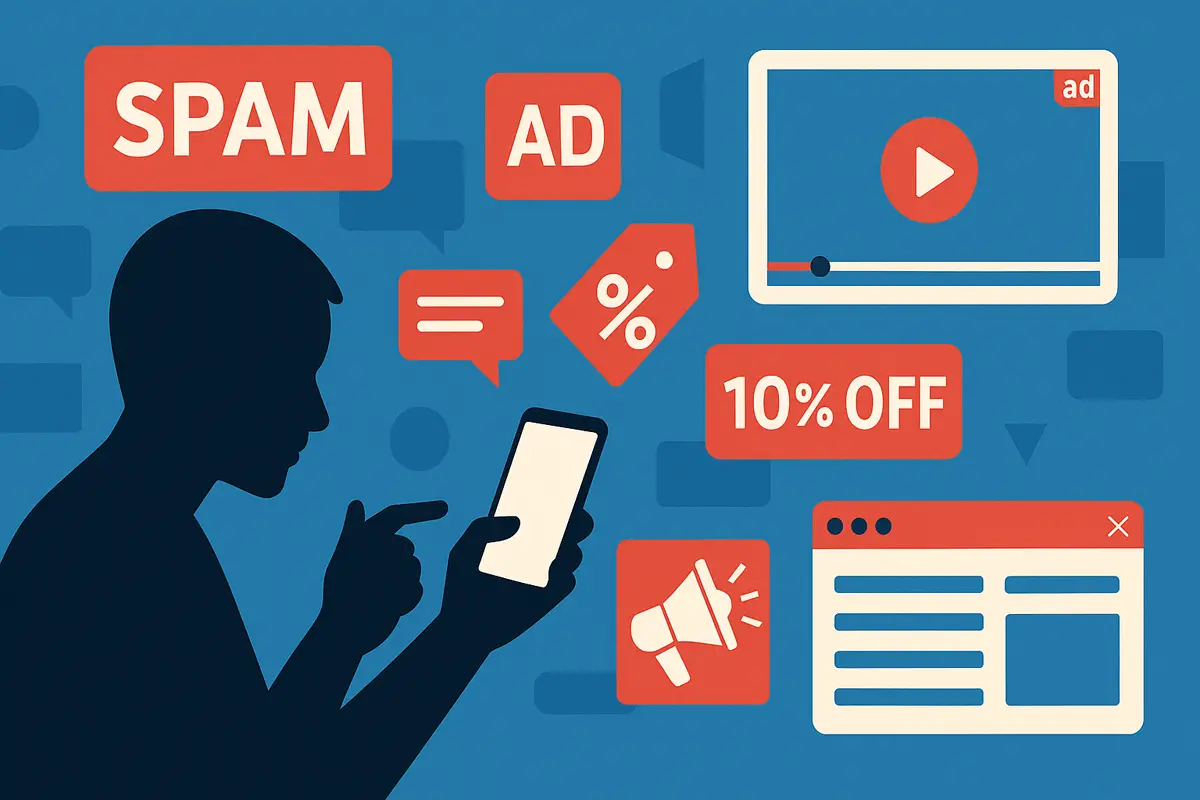The Lost Art Of Keeping Your Customers In The Loop (Without Spam)

There’s a fair amount of spam out there, and so many people vying for your attention that you’ve no doubt tuned out 99% of it. When you’re scrolling your social media feed, do you notice and really absorb every ad you scroll past? When you’re watching a video online, do you skip the advert to get to the good stuff? Do you use an ad blocker on your web browser? Do you listen closely when an ad plays on the radio unless you have nothing else going on?
Odds are, you’ve learned to tune all this out. The endless drudge of marketing means that brands need to do a fair amount to be noticed, be that an earworm or a national campaign using iconic characters and a all-singing, all-dancing production.
As someone just looking to get the ball rolling on our promotional efforts, this isn’t always the most fun. You may even feel a little lost. Don’t worry though, because in this post we’ll discuss the lost art of keeping your customers in the loop, not just shouted at through marketing, and how to do it without spam:
1. Use Email Marketing Tools For Sign-Ups
A healthy email newsletter with free email marketing tools can be a good means of ensuring outreach. Pick an email platform that makes subscribing easy and unsubscribing just as convenient, because forcing people to jump through hoops to get off your list makes them remember your business for all the wrong reasons.
Sending updates once a week or every couple of weeks works well for most businesses, though this depends on what industry you’re in and how much genuinely interesting insight and promotional content you have to share.
Making sure every email contains something useful, be that a behind-the-scenes look at your process, a heads up about a new product, or just a quick story about something interesting that happened at work, helps people feel like they’re getting something worthwhile instead of being treated like walking wallets. For instance, if you run a charcuterie restaurant, then having a chef talk about their favorite cheeses each week could gain a healthy following in your local town.
2. Offer Promotions Hidden In Marketing Materials
If you can offer promotional content with discount and loyalty codes, then people have a reason to read what you’re putting out. It’s much nicer to get a weekly roundup email if it has a 10% discount on a product that may be on their account wishlist, or a promotion they can jump into without necessarily feeling exploited.
That means they won’t feel like they’ve done you a favor for having read your materials; you’ll have put them out with something that balances the scales a little. That’s nice in a world where we feel marketing is constantly shouting at us from across the street.
3. Create Simple, Effective Narratives
Stories work infinitely better than sales pitches because they help people understand what you do and why it matters without feeling like they’re being sold to.
Testimonials can sometimes help, like telling people about the customer who found exactly what they needed after searching everywhere else, or the problem you solved last week that nobody else could figure out, or the new product that came about because someone asked for it and you thought it was a brilliant idea.
However, don’t just couch this in the “we’re great, buy from us” tone, because that just reads like a personal ad you used an AI bot to render in a more relatable tone. A narrative instead might be going through the redevelopment work in your premises and how this design might benefit your customers or clients, or staff highlights, or even event attendance experiences and connections you made. It’s nice to have these minor updates graded between customers, clients, or partner types. A simple narrative can help you remember your entire communications strategy and render it more effectively.
4. Schedule An “Update Day”
Pick a day of the week or month and make it your official update day, be that the first Wednesday of every month or every other Friday, whatever works for your schedule and gives you enough time to gather interesting things to share. Having a reliable schedule helps people know when to expect communication from you, which means they’re more likely to pay attention because they’re not being surprised by random messages at odd times.
Use this day to share what’s new, what you have coming up, and what’s been happening behind the scenes that your customers might find interesting or useful. Such a newsletter allows you to ensure something substantive as opposed to boring reminders, you’re still here (which they know).
Some examples include if there’s a new product launch on the horizon, or you’ve hired someone new who brings interesting skills to the team, or you’ve learned something fascinating about your industry that changes how you think about your work. Substance-led marketing seems less common in today’s world, but a little care goes a long way.
5. Use A Prominent FAQ Section At The End Of Correspondence
Every email, newsletter, or update should end with a clear FAQ section that answers the most common questions people have about your business, which saves time for both you and your customers while showing that you understand what people want to know.
Keep the FAQ section short and focused on the basics like how people can contact you, what your hours are, how returns work, and what your turnaround time looks like because these simple questions come up over and over again.
Update this section as new questions come, as they always will, because the FAQ that worked six months ago might not cover what people are asking about today.. If you can get ahead of questions before they’re asked, which makes you look professional and considerate, then you’ll be keeping your customers in the loop, advertising to them, and reducing your general social media ad churn.
With this advice, you;’ll be sure to perfect the art of keeping your customers in the loop!










